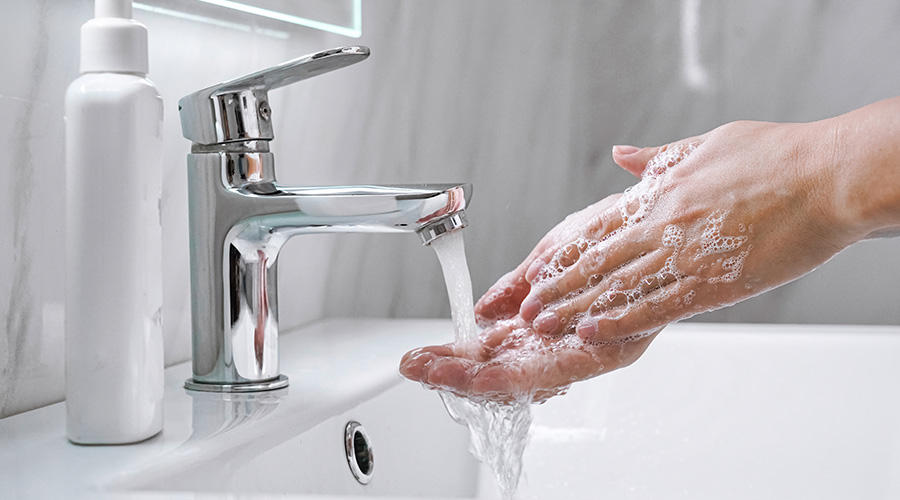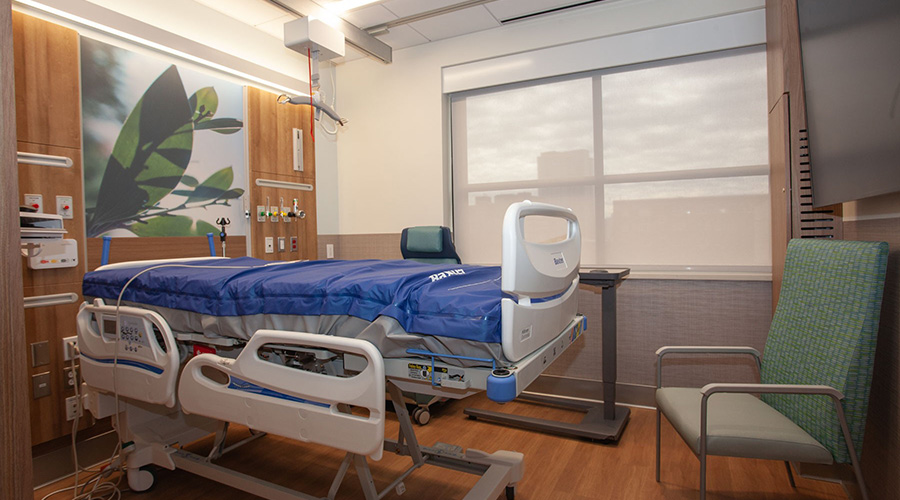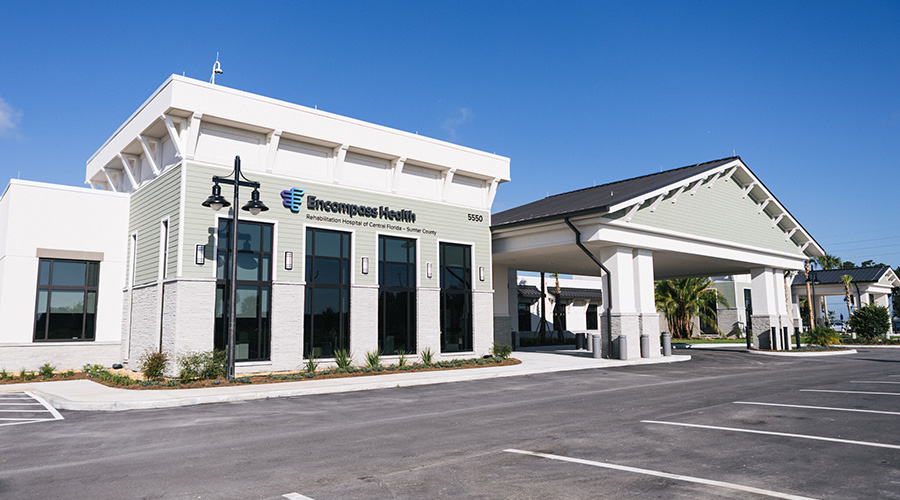Successful prevention of hospital-acquired infections (HAIs) requires a team approach by healthcare providers, facility managers, and infection prevention and control professionals. With the recent announcement that the Centers for Medicare and Medicaid Service’s Hospital-Acquired Conditions (HAC) Reduction Program is cutting Medicare payments for 769 hospitals in fiscal year 2017 due to high rates of HACs, it is becoming increasingly obvious that healthcare facilities must take a comprehensive approach in considering all potential sources for HAIs. One of the more recently scrutinized issues related to HAIs is the degree to which hospital air can be contaminated with pathogens and the potential for airborne transmission of those pathogens.
As Sattar et al stated in the September 2016 supplement of the American Journal of Infection Control, “Air, a universal environmental equalizer….has profound health implications in all indoor environments”.1 There is a bounty of evidence documenting the presence of nosocomial organisms, beyond traditional respiratory pathogens, in hospital air.2-8 Numerous bacteria, fungi, and viruses can survive for extended periods of time in the relatively harsh airborne environment and have been captured by both active and passive sampling methods in patient wards, operating rooms, and outpatient waiting rooms.3,9-12 In many cases, these organisms have shared clonality with patient or staff isolates.3,8,12
Perhaps more concerning is the fact that aerobiology research has indicated that measured air bioburdens may actually underestimate true air bioburdens because some vegetative bacteria can enter a non-replicative starvation state in air which renders them non-culturable by standard microbiological techniques despite the fact the organisms are still viable.13 Multiple outbreaks of virulent pathogens, including methicillin-resistant Staphylococcus aureus (MRSA) and Acinetobacter spp. in a variety of healthcare settings ranging from trauma units to orthopedic wards intensive care units have been linked to airborne transmission.7,14-16 Vulnerable patient populations such as those in otolaryngology units where patients lack the normal host defense mechanisms in the upper respiratory tract or burn units where patients lack an adequate skin barrier are particularly at risk for airborne transmission. With this increasing evidence, the question for the infection preventionist becomes how to treat contaminated air?
For Maureen Spencer, corporate director of infection prevention and control for Universal Health Services, that answer was found in an existing patented disinfection solution that combines an ultraviolet germicidal irradiation (UVGI) chamber and air circulating fans with an overhead ceiling light. The patented system uses UV-C light and filtration to draw in and treat environment air and then recirculates the treated air back into the room, helping to reduce the bioburden. This put a new twist on a relatively “old” technology by creating active UVGI. Spencer was familiar with the history of utilizing UV light for air disinfection and the bounty of research establishing UVGI’s ability to effectively eliminate pathogens in the air.17-22
The CDC states that ultraviolet irradiation of air is an effective means of “reducing the transmission of airborne bacterial and viral infections in hospitals.”23 The germicidal effect is achieved as UV light induces the formation of thymine dimers in nucleic acids, causing breaks in the DNA of microorganisms preventing them from growing and replicating. Ultraviolet Germicidal Irradiation (UVGI) has a surprisingly long history of air disinfection, dating back as early as the late 1800s.24 Early uses included disinfection of OR air, barriers in infant wards, and upper room systems to control measles and TB outbreaks. However, as Nicholas Reed discusses in his article, “The History of Ultraviolet Germicidal Irradiation,” the use of UVGI lost momentum in the early to mid-1900s for a number of reasons, including the development of antibiotics for treatment of tuberculosis (TB), improved vaccination programs, anxiety over about the risks of UV exposure, and concerns about the high maintenance associated with UV systems.24 The resurgence of TB and, in particular, multidrug-resistant TB cases in the 1980s prompted researchers to begin to take a second look at UVGI for air disinfection.24
Historically, there have been two primary types of UV air treatment systems: so-called duct and upper room systems. Duct systems involve placement of UV lamps inside the ducts of HVAC systems. While highly effective at disinfecting cooling coils, drip pans, and other surfaces within the HVAC systems, they can only provide minimal airstream disinfection because of the rapid rate of air movement (400 to 1,000 cubic feet per minute) and therefore minimal UV exposure time. In their review of available literature, Memarzadeh et al found no evidence to support a decrease in HAI rates from the use of UV duct systems.25 Upper room systems typically involved either suspension of upward-facing irradiation units or parallel systems that deflect the UV light outward.
An advantage to these systems is the fact that they are directly treating occupied spaces, the sources of contamination. Unlike HEPA filters which are used in conjunction with HVAC systems and require the air to pass through the filter in the supply or return ductwork to achieve their effect, upper room UV systems can neutralize airborne microorganisms within the room before they either reach the air filtration system or are allowed to settle. Significant barriers to the implementation of many of these UV systems designed to treat the air, however, have been the structural or engineering changes required to accommodate them.24 Additionally, the air disinfection efficacy of the suspended upper room systems is passive and is dependent on adequate air circulation and mixing necessary to bring the air to the light.23 The inverse square law establishes that the distance from the UV source and the intensity of radiation (and thus the level of germicidal effect) are inversely related such that the shorter the distance from the UV source, the greater the germicidal irradiation. Therefore, if the air does not reach a close proximity to the units, the germicidal effect is significantly diminished.26
With 26 facilities, ranging from large tertiary acute care centers to small psychiatric facilities falling under her purview, Spencer needed a means of addressing contaminated air that could be easily integrated into a variety of environments and which could provide disinfection for a broad spectrum of airborne microorganisms. Aware of the limitations of traditional UV air treatment systems, but interested in UV’s potential to effectively and relatively inexpensively disinfect air, Spencer investigated the recent advances in UV technology which have resulted in the development of active UV upper air/upper room treatment systems that assume the footprint of a standard 2’ x 4’ ceiling panel or light fixture. These systems utilize fans to actively draw air at a rate of 50 ft3 per minute (cfm) through filters that remove larger particles such as dust and then pull the air into a shielded UV chamber where it is irradiated.
The emitted light, occurring at a wavelength of 253.7 nanometers (nm), is actually amplified by mirrored UV chambers that reflect and thereby intensify the light, a proven means of amplifying the irradiation.27 Safety baffles prevent the light from escaping, thus eliminating UV exposure risk to patients and healthcare providers alike. Additionally, the chambers are only three inches deep, allowing them to capitalize on the inverse square law by minimizing the distance between the light and its target. Once the air is irradiated, it is then pushed out of the chambers by fans at a 30 degree angle to promote circulation throughout the room and to prevent the continuous re-treatment of the same air. A notable feature for Spencer was the fact that these units do not affect the existing HVAC operation in a room, nor do they affect the pressurization, whether positive or negative, but rather treats and recirculates the air within a room. To further understand this, it is helpful to think about the aerodynamics involved. Globally air moves from an area of higher pressure to lower pressure. In the hospital/building ventilation system the air fan speed and air pressure is greater than that of the UV air treatment system. The system operates at 50 cfm utilizing a pressure differential into the UV-C chamber.
The fan blades on the system scoop air and are on the downside of the air stream. Once it passes the fans and UV-C lamp, the air is then on the pressure side of the fan. The system operates using a low pressure fan and, similar to other equipment in the room, does not interfere with the higher fan speeds, air volume and ambient static room pressures from the main HVAC units according to the manufacturer. The room calculation for pressure and room duct pressure is TP=SP+VP. Where TP is total pressure, VP is average velocity pressure and SP is static pressure.28
Spencer found that aerobiology modeling of these new systems demonstrated an average single pass removal rate of 97 percent for 44 nosocomial pathogens with a known or suspected airborne component in their transmission cycle, including bacteria, viruses, and fungi.27 Perhaps more significantly, for some of the most virulent pathogens, including MRSA, VRE, and C.difficile, the removal rate (reflecting both filtration and UV disinfection) was 100 percent modeled for those pathogens that pass through the chamber.27
The easy integration and low maintenance requirements (annual UV bulb replacement and quarterly to semi-annual filter replacement) of active UVGI allowed Spencer to begin the process of initiating air disinfection throughout her network without requiring significant time and resource allocation. Data tracking at a controlled access psychiatric holding unit in a Nevada acute care hospital emergency department, one of her first facilities to utilize UVGI, found that pre- and post-installation (accounting for 1 unit/100 ft 2) sampling revealed an 80 percent reduction in total bacterial cfu air counts and a 66 percent reduction in total bacterial cfu surface counts post-installation.29
Air disinfection is only one piece of the puzzle
Spencer is quick to point out that despite the growing evidence supporting the fact that many nosocomial pathogens, including multidrug-resistant organisms, are present in hospital air, it is important to remember that treating hospital air is only one front in the battle against healthcare-associated infections. A comprehensive approach to environmental disinfection is clearly necessary as there is a constant interplay between all aspects of the environment. Airborne pathogens can settle onto surfaces much as disturbances of those surfaces can resuspend pathogens into the air. As Ijaz et al state, “continual redistribution of microbes indoors occurs at the air-surface-air nexus”.30 Evidence suggests facilities have been making strides with addressing surface contamination, but it might just be time to reconsider addressing the air.
References
1.) Sattar SA, Kibbee RJ, Zargar B, et al. Decontamination of indoor air to reduce the risk of airborne infections: studies on survival and inactivation of airborne pathogens using an aerobiology chamber. Am J Infect Control. 2016; 44(10):e177-e182.
2.) Dürmaz G, Kiremitçi A, Akgün Y, et al. [The relationship between airborne colonization and nosocomial infections in intensive care units]. Mikrobiyoloji bulteni. 2005; 39(4):465-71.
3.) Shiomori T, Miyamoto H, Makishima K. Significance of airborne transmission of methicillin-resistant Staphylococcus aureus in an otolaryngology–head and neck surgery unit. Arch Otolaryngol Head Neck Surg. 2001; 127(6):644-8.
4.) Muzslay M, Moore G, Turton JF, et al. Dissemination of antibiotic-resistant enterococci within the ward environment: the role of airborne bacteria and the risk posed by unrecognized carriers. Am J Infect Control. 2013; 41(1):57-60.
5.) Kumari DN, Haji TC, Keer V, et al. Ventilation grilles as a potential source of methicillin-resistant Staphylococcus aureus causing an outbreak in an orthopaedic ward at a district general hospital. J Hosp Infect. 1998; 39(2):127-33.
6.) Gao J, Zhao X, Bao Y, et al. Antibiotic resistance and OXA-type carbapenemases-encoding genes in airborne Acinetobacter baumannii isolated from burn wards. Burns. 2014; 40(2):295-9.
7.) Munoz-Price LS, Fajardo-Aquino Y, Arheart KL, et al. Aerosolization of Acinetobacter baumannii in a trauma ICU. Crit Care Med. 2013; 41(8):1915-8.
8.) Shimose LA, Doi Y, Bonomo RA, et al. Contamination of ambient air with Acinetobacter baumannii on consecutive inpatient days. J Clin Microbiol. 2015; 53(7):2346-8.
9.) D'Arcy N, Cloutman-Green E, Klein N, et al. Environmental viral contamination in a pediatric hospital outpatient waiting area: Implications for infection control. Am J Infect Control. 2014; 42(8):856- 60.
10.) Lee LD, Berkheiser M, Jiang Y, et al. Risk of bioaerosol contamination with Aspergillus species before and after cleaning in rooms filtered with high-efficiency particulate air filters that house patients with hematologic malignancy. Infect Control Hosp Epidemiol. 2007; 28(09):1066-70.
11.) Marchand G, Duchaine C, Lavoie JL, et al. Bacteria emitted in ambient air during bronchoscopy—a risk to healthcare workers? Am J Infect Control. 2016. Available from: http://dx.doi.org/10.1016/j.ajic.2016.04.241
12.) Edmiston CE, Seabrook GR, Cambria RA, et al. Molecular epidemiology of microbial contamination in the operating room environment: Is there a risk for infection? Surgery 2005; 138(4): 573-582.
13.) Beggs CB. The airborne transmission of infection in hospital buildings: fact or fiction? Indoor Built Environ. 2003; 1;12(1-2):9-18.
14.) Allen KD, Green HT. Hospital outbreak of multi-resistant Acinetobacter anitratus: an airborne mode of spread? J Hosp Infect. 1987; 9(2):110-9.
15.) Bernards AT, Frénay HM, Lim BT, et al. Methicillin-resistant Staphylococcus aureus and Acinetobacter baumannii: an unexpected difference in epidemiologic behavior. Am J Infect Control. 1998; 26(6):544-51.
16.) Wagenvoort JH, Davies BI, Westermann EJ, et al. MRSA from air-exhaust channels. Lancet. 1993; 341(8848): 840-1.
17.) Fernstrom A, Goldblatt M. Aerobiology and its role in the transmission of disease. J Pathog. 2013. Vol. 2013. doi: 10.1371/journal.pone.0034867
18.) Riley RL, Nardell EA. Cleaning the air: the theory and application of UV air disinfection. Am Rev Respir Dis 1989; 139:1286–94.
19.) Riley RL. Ultraviolet air disinfection for control of respiratory contagion. In: Kundsin RB, ed. Architectural design and indoor microbial pollution. New York, NY: Oxford University Press, 1988; 174–97.
20.) Willmon TL, Hollaender A, Langmuir AD. Studies of the control of acute respiratory diseases among naval recruits. I. A review of a four-year experience with ultraviolet irradiation and dust suppressive measures, 1943 to 1947. Am J Hyg 1948; 48:227–32.
21.) Wells WF, Wells MW, Wilder TS. The environmental control of epidemic contagion. I. An epidemiologic study of radiant disinfection of air in day schools. Am J Hyg 1942; 35:97–121.
22.) Perkins JE, Bahlke AM, Silverman HF. Effect of ultra-violet irradiation of classrooms on spread of measles in large rural central schools. Am J Public Health Nations Health 1947; 37:529–37.
23.) Centers for Disease Control and Prevention. 2007 Guideline for Isolation Precautions: Preventing Transmission of Infectious Agents in Healthcare Settings. Available from: http://www.cdc.gov/hicpac/2007IP/2007isolationPrecautions.html. Accessed 26 August 2016
24.) Reed, NG. The history of UVGI for air disinfection. Public Health Rep. 2010; 125(1): 15-27.
25.) Memarzadeh F, Olmsted RN, Bartley JM. Applications of ultraviolet germicidal irradiation disinfection in health care facilities: effective adjunct, but not stand-alone technology. Am J Infect Control. 2010; 38(5):S13-24.
26.) Kowalski WJ, Bahnfleth WP, Mistrick RG. A specular model for UVGI air disinfection systems. International Ultraviolet Association News. 2005; 7(1): 19-26. Available from: http://www.iuva.org/sites/default/files/member/news/IUVA_news/Vol07/Issue1/KowalskiArticl epg19.pdf. Accessed 20 July 2016.
27.) Kowalski, W. Report on the Performance of the VidaShield System. 2011. Available from: http://vidashield.com/files/whitepaper/dr-kowalski-vidashield-final-report.pdfAccessed 2 July 2016.
28.) The Occupational Environmental: Its Evaluation, Control and Management. Second Edition, Edited by Salvatore R. DiNardi, American Industrial Hygiene Association, 2003, p873-878
29.) Desert Springs Hospital Medical Center. Las Vegas, NV. 2015-2016. [unpublished internal data]
30.) Ijaz MK, Zargar B, Wright KE, et al. Generic aspects of the airborne spread of human pathogens indoors and emerging air decontamination technologies. Am J Infect Control. 2016; 44(10): S109-S120.

 Choosing a Disinfectant That Kills Biofilm
Choosing a Disinfectant That Kills Biofilm Third-Party Data Breach Case Underscores Need for Cyber Risk Management
Third-Party Data Breach Case Underscores Need for Cyber Risk Management Northwest Medical Specialties Reports Data Breach
Northwest Medical Specialties Reports Data Breach Streamlined Integrated Project Delivery Tackles Design Challenges
Streamlined Integrated Project Delivery Tackles Design Challenges Encompass Health Rehabilitation Hospital of Central Florida - Sumter County Opens
Encompass Health Rehabilitation Hospital of Central Florida - Sumter County Opens